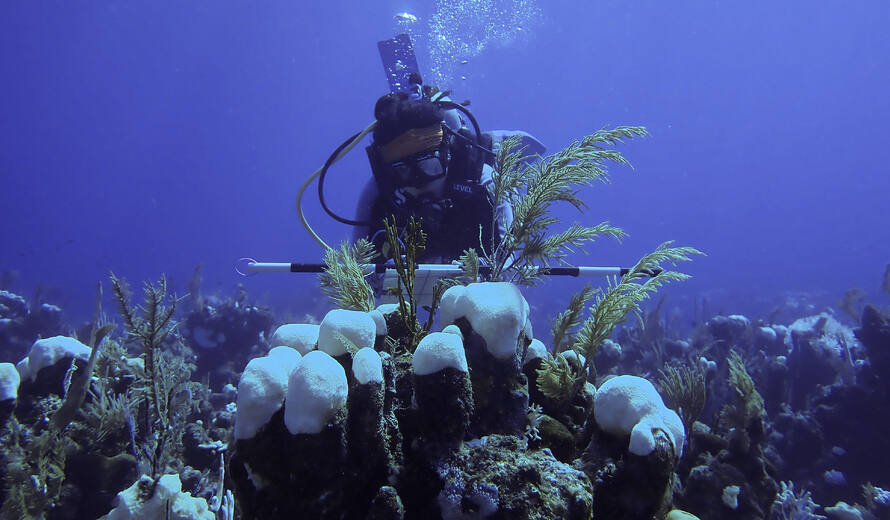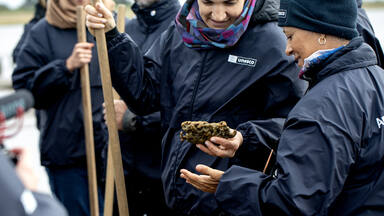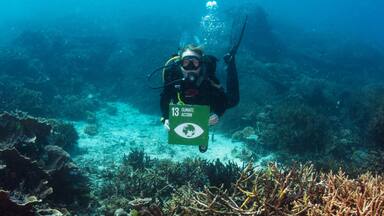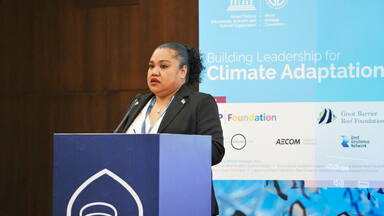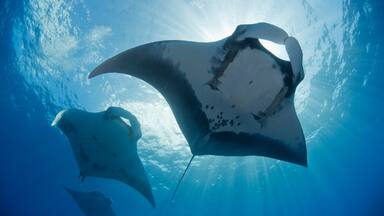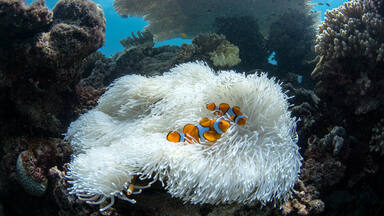UNESCO World Heritage-Listed coral reefs share experiences on fourth global bleaching event
On 22 May 2024, managers from the 29 UNESCO World Heritage-listed coral reefs came together online with experts from the United States National Oceanographic and Atmospheric Association (NOAA) to share experiences in monitoring the effects of the fourth mass bleaching event that is currently unfolding around the globe.
The world is now experiencing its fourth global coral bleaching event, as confirmed by NOAA and the International Coral Reef Initiative (ICRI) last April. This is the second mass coral bleaching event this decade. The widespread bleaching is expected to impact 30% of the 29 UNESCO World Heritage-listed coral reef ecosystems. In 2017, the first scientific assessment on the impact of climate change on World Heritage coral reefs predicted that all World Heritage-listed reefs would undergo mass bleaching events twice per decade by 2040.
The recent online meeting aimed to equip local reef managers with the latest knowledge of bleaching alert systems and preparedness practices. This will help local management teams across World Heritage coral reefs to swiftly implement monitoring and evaluation measures during future bleaching events, ensuring they are better prepared to protect these vital ecosystems.
The online meeting brought together global experts and local management teams. Dr. Derek Manzello, Director of NOAA’s Coral Reef Watch, provided a detailed update on the fourth global bleaching event and highlighted the heat stress that is expected across the UNESCO World Heritage-listed coral reefs in the coming months. Ms. Jennifer Koss from NOAA’s Coral Reef Conservation Program discussed key management strategies to prepare for, and manage, bleaching events locally. Recommendations focussed on reducing local threats to build resilience and exploring bleaching prevention strategies through the identification of resilient "super corals”, among other strategies.
Managers from across the network of UNESCO World Heritage-listed coral reefs shared their first-hand experiences and management responses for the fourth global bleaching event. At the Aldabra Atoll World Heritage site in the Seychelles, a decade-long reef monitoring program has been in place to track how reefs respond to thermal stress. Efforts concentrate on finalizing bleaching monitoring protocols, sharing observations with global monitoring organisations, and maintaining annual monitoring activities.
Managers from the Belize Barrier Reef Reserve System World Heritage site shared findings from coral bleaching surveys conducted following the 2023 bleaching event and insights into how to measure coral recovery and mortality, particularly in the hardest-hit areas.
The UNESCO World Heritage List comprises 50 marine sites across 37 countries, with 29 sites featuring coral reef ecosystems. Due to their status as the world’s flagship marine protected areas, UNESCO World Heritage marine sites are uniquely positioned to drive change and innovation, help set global standards in conservation excellence, and serve as beacons of hope in a changing ocean. UNESCO World Heritage-listed coral reefs make up at least 15% of the global surface area of coral reef ecosystems.
This online meeting is made possible with the support of the French Biodiversity Agency, the Great Barrier Reef Foundation.
